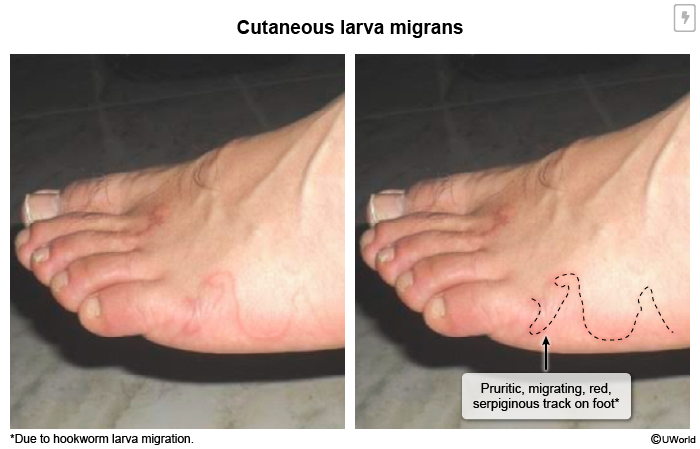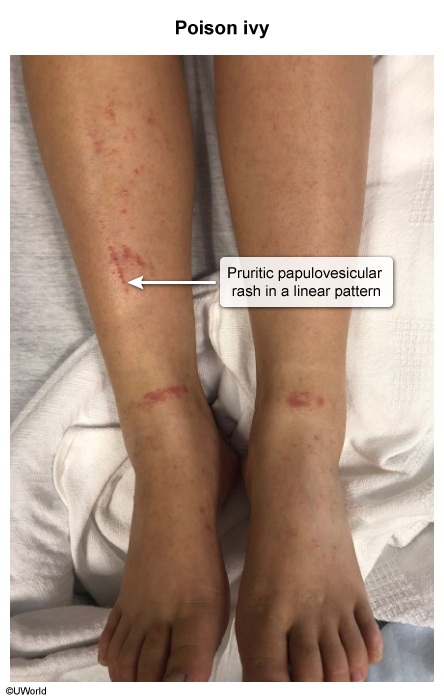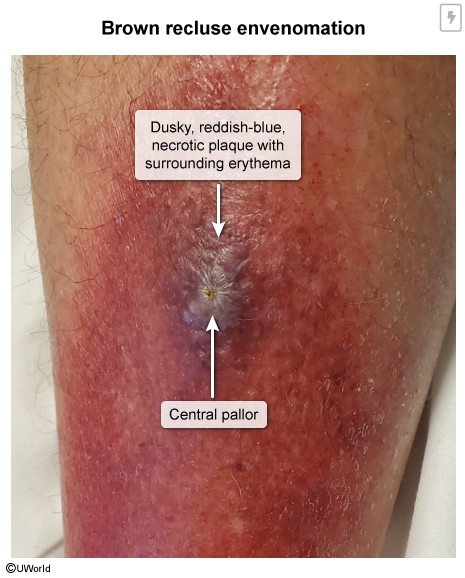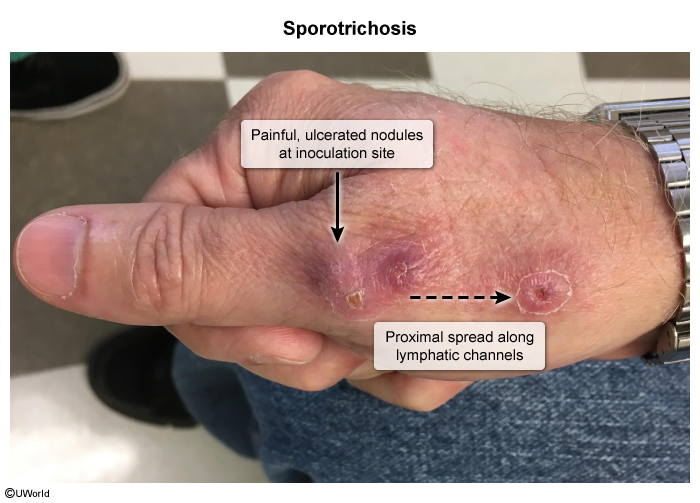Cutaneous Larva Migrans
Article Sections
Introduction
Cutaneous larva migrans is a parasitic skin infection caused by cat or dog hookworms, Ancylostoma braziliense or Ancylostoma caninum, respectively. Dermal penetration leads to serpiginous, pruritic skin lesions, typically without spread to deeper tissues.
Pathophysiology
Hookworms are parasitic pathogens in which the head of the worm is curved away from the body, giving the organism a "hooked" appearance. The hookworms that cause cutaneous larva migrans spread when the egg-containing feces of an infected cat or dog are deposited into shady, warm, moist sand or soil. Eggs hatch into larvae and are transmitted when they come into direct contact with human skin (eg, when walking barefoot in contaminated sand/soil); thus, most cases occur in tropical and subtropical regions. The spread of larvae through the adjacent epidermal tissue leads to the formation of migrating serpiginous tracks, which trigger inflammation with associated pruritus.
Continue Learning with UWorld
Get the full Cutaneous Larva Migrans article plus rich visuals, real-world cases, and in-depth insights from medical experts, all available through the UWorld Medical Library.
Figures
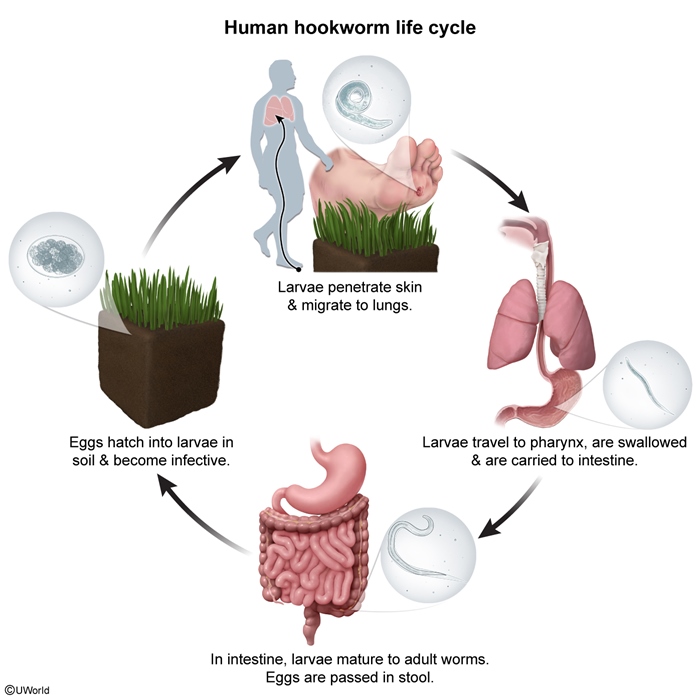
Images
